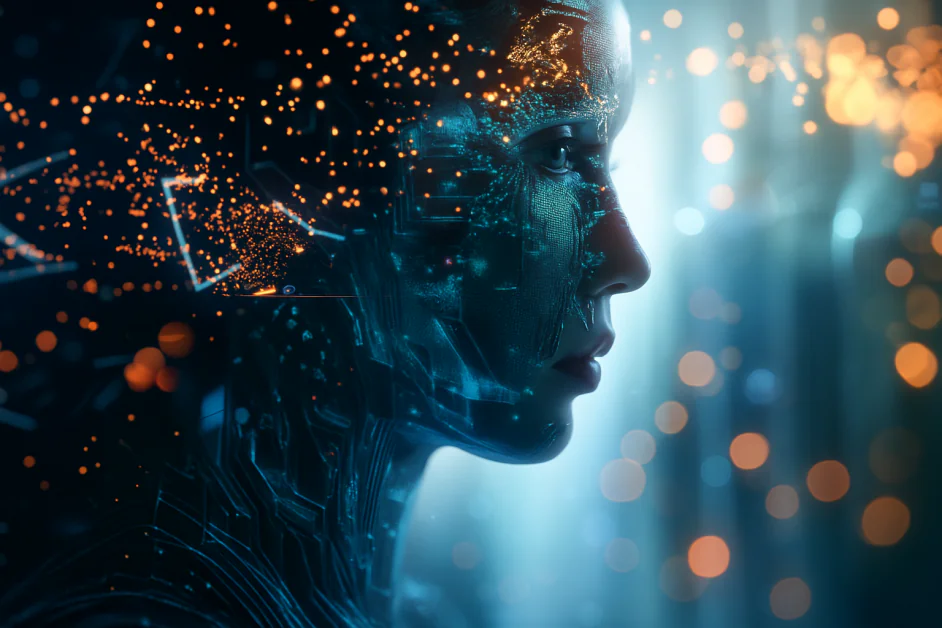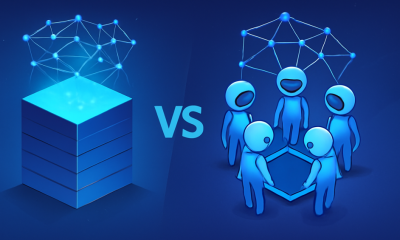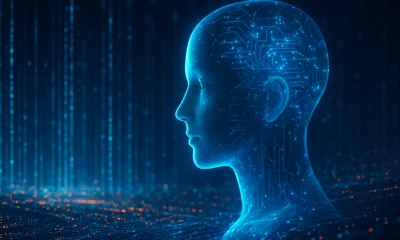Thought Leaders
When AI Thinks Like Humans: Exploring the Mind of LLMs and Agents

Today, LLMs and agents learn, analyze, and make decisions in ways that can blur the line between their algorithmic “thinking” and the human mind. The approaches they are built on already mimic our cognitive processes, and the scale of their training surpasses human experience by orders of magnitude. This raises the question: are we creating a tool that expands our capabilities, or are we giving rise to a new type of mind whose consequences are still impossible to predict?
How do models think
It’s important to distinguish between the concepts of LLMs and agents. To draw an analogy with a computer, an LLM can be compared to one of its components, for example, the processor. An agent, however, is the entire system, a “motherboard” to which various modules are connected: memory, graphics card, and network. Similarly, an agent is a complex system that can incorporate one or more LLMs, supplemented with decision-making mechanisms and tools for interacting with the external environment.
If we consider the work of a single LLM, it all boils down to pattern matching. However, when an agent chains multiple LLMs, we can say it “thinks,” although this process is still built on patterns. The agent constructs the logic of interaction between models: for instance, one LLM analyzes the task, and based on this analysis, the agent determines what action another LLM should perform.
Human thinking works in a similar way: we rely on accumulated knowledge and patterns, select them at the right moment, process them, and formulate conclusions. This process is called reasoning.
ChatGPT, like a human, has two types of memory: short-term and long-term. The difference is that in humans, access to these memory levels is more complex and not always linear.
Short-term memory is information we are working with right now. For a person, it might be what you said five minutes ago: they might remember it or not. GPT, however, always takes into account everything within its “context window” – it cannot skip or ignore this data.
Long-term memory in humans consists of memories that are not always active and may surface only with specific triggers: a childhood memory, a trauma, or, for example, working with a psychologist. GPT has a similar logic: it does not “recall” information on its own unless it is specifically activated. For example, an instruction like “Never ask me this question again” or “Always address me formally” can be stored in long-term memory and applied during every session.
Another example of long-term memory is saved documents. Suppose you uploaded to GPT an instruction for conducting marketing research. The model can store it in memory, but that doesn’t mean it will refer to that document with every question. If you ask, “Can you shine a flashlight on the Moon?” GPT will ignore the instruction. But if the request contains keywords matching the document’s text, the model can “recall” it.
This mechanism is implemented through RAG (Retrieval-Augmented Generation), an approach where the model gains access to stored information triggered by relevant cues via vector databases.
Thus, it can be said that the model really does have memory, but it functions according to a different, more formalized logic, distinct from human memory.
Why does a conversation with AI sometimes feel therapeutic, and other times cold and robotic?
Modern language models are extremely large: they store a colossal amount of data, knowledge, and context. All this information is organized into so-called “clusters”, thematic and semantic areas. The model was trained on diverse sources, ranging from fiction and scientific articles to YouTube comments.
When you interact with AI, your query (prompt) effectively directs the model to a certain cluster.
For example, if you write: “You are a real estate lawyer in New York with 20 years of experience, help me buy an apartment,” the model activates several clusters at once: lawyer → New York → real estate. As a result, you receive a coherent, relevant, and realistic response, as if you were really consulting an experienced professional.
If the query concerns more personal or philosophical topics, such as self-development or emotions, the model “shifts” to other clusters, such as psychology, philosophy, or inner work. In this case, its answers may seem surprisingly human and even therapeutic.
However, with overly general or vague phrasing, the model “gets lost” in its cluster structure and gives a default response, formal, detached, and lacking emotional tone.
The style and depth of the AI’s response depend on which cluster you direct it to with your prompt.
The philosophy of model training and RLHF
Artificial intelligence has different approaches to learning. It’s not so much a philosophy as a strategy.
The classic option is supervised learning, where the model is given a question and the correct answer. It learns by observing what is considered correct and then reproduces similar solutions in the future.
But another approach is RLHF (Reinforcement Learning from Human Feedback). This is a different style: the model tries something, receives a “reward” for successful actions, and adjusts its behavior. Gradually, it develops an effective strategy.
RLHF can be compared to the process of turning raw material into a finished product. To make a model that is convenient to use, a colossal amount of work with human feedback is required.
Imagine I show you an object without naming it directly. You hesitate: “Is it a cigarette case? A cardholder?” I only give hints like: “Closer,” “Farther,” “60% yes.” After hundreds of such iterations, you guess: “Ah, it’s a wallet.”
LLMs are trained this way. Humans, annotators, and professionals in general, evaluate: this answer is good, this one is bad, and assign scores. Companies like Keymakr, which specialize in high-quality data annotation and validation, play a key role in this process. Feedback also comes from ordinary users: likes, complaints, and reactions. The model interprets these signals, forming behavioral patterns.
How model training looks in practice
A vivid example is OpenAI’s experiment training agents using reinforcement learning in the game “Hide and Seek.”
Two teams participated in it: the “seekers” (red) and the “hiders” (blue). The rules were simple: if a seeker catches a hider, they earn a point; if not, they lose one. Initially, the agents only had basic physical abilities, running and jumping, without any predefined strategies.
At the start, the seekers acted chaotically, and catching opponents happened by chance. But after millions of iterations, their behavior evolved. The hiders began using surrounding objects to block doors and build barriers. These skills emerged without direct programming, purely through repeated attempts and rewards for success.
In response, the seekers began to use jumping, a capability available from the beginning but previously ignored. After a series of failures, the random use of jumping revealed its tactical value. Then the hiders complicated their defense further, removing objects from the seekers’ line of sight and building more reliable shelters.
The experiment showed that through billions of cycles of trial, error, rewards, and penalties, complex cooperative behavior can form without developer intervention. Moreover, the agents started acting in coordination, even though communication mechanisms were not programmed, simply because teamwork proved more effective.
It’s the same with large language models. It’s impossible to script all scenarios: there are too many situations and too much variability in the world. Therefore, we don’t teach the model fixed rules; we teach it how to learn.
This is the value of RLHF. Without it, an LLM and agents remain just a library of texts. With it, it becomes a conversational partner capable of adapting, correcting itself, and, essentially, evolving.
What is next?
Many wonder whether LLMs and agent developments could lead to undesirable or even dangerous consequences.
It is important to understand that what we see today is not even an MVP, but merely a prototype.
The real revolution will not be about helping to write a beautiful letter or translate it into French. Those are minor things. The main direction is the automation of microtasks and routine processes, leaving humans only truly creative, intellectual tasks or time for rest.
Real innovations are focused around agents, systems that can independently think, act, and make decisions instead of a person. This is precisely where companies like OpenAI, Google, Meta, and others are focusing their efforts today.
Large language models are just the foundation. The true future lies in agents trained to live in a dynamic world, receive feedback, and adapt to changes.












